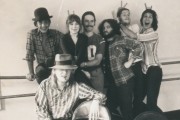“One ring to rule them all.” I sat in the dark cinema next to my father and stared mouth agape at the titles unfolding on screen. My dad and I then turned to face one another and finished Tolkien’s famous stanza along with the trailer voiceover. “And in the darkness bind them.” Little did I know, as the booming orchestra and choir began to play over sweeping scenes of epic scale, that this trailer would become arguably the most powerful in my memory. It’s an experience I’ll never forget and watching the trailer on YouTube still sends chills down my spine.
Even just a decade ago was a time when commoners could still be blown away by shocking trailers and masterfully edited teasers. Ain’t It Cool News and Yahoo! Movies were just finding their footing on the wide expanse of the Internet and the trades such as The Hollywood Reporters and Variety were nigh inaccessible to those outside the industry or without deep interest in film production. It was a time before social media and blogs could yank the curtain down on a mesmerizing new marketing campaign by the monolithic movie studios. This new age of instant access and Twitter-quick news has certainly changed movie marketing forever, though it comes with both benefits and caveats.
Look no further than the Big Trailer Week that closed out 2011, in which The Dark Knight Rises, The Hobbit, and Prometheus – three films expected to make 2012 an unprecedented year of box office returns for Hollywood – all premiered awe-inspiring new trailers to a waiting, drooling public. The week was an event not just for studios and avid filmgoers, but also for the people who’d been bludgeoned by news articles from blogs and magazines, banners on Apple’s Movie Trailers website and iTunes Store application, and a waterfall of posts on Twitter, Facebook Fan Pages, and other forms of social media.
I’ve been glued to the trades, movie blogs, and magazines for years now and I’m still being amazed by one marketing tactic in particular: the teaser teaser. No, that’s not a typo. The “teaser teaser” is something I’ve seen primarily on Entertainment Tonight where the hosts show sneak peeks of trailers just before the full version is released to theaters and the web. A 30-second segment during the entertainment highlight show debuts brief sequences from the full trailer – which itself demonstrates brief sequences from the film – and then advises the viewer to come back for the complete trailer at a later date. The most recent examples of this are Sherlock Holmes: A Game of Shadows and The Avengers, both blockbusters with the marketing capital to justify these inane mini-teaser-trailer things. The worst offender, in my opinion, was MTV’s one-second teasers for The Hunger Games trailer during its Video Music Awards at the end of last summer. One second. There were two micro-teasers shown to hype the trailer for a film. I feel like the industry’s sentiments on the American attention span are becoming self-destructive.
Keep in mind that a movie trailer, as incredible and beloved a medium as it is, is still just a commercial. That’s all it ever is. Even the most transcendent and brilliant trailers (2008’s The Dark Knight, 2009’s Star Trek, 2011’s The Girl With The Dragon Tattoo) are still just ways to get you to spend money. And that’s okay! As I’ve said: I love trailers. The good ones work on me and the great ones stay with me. But all of these elements, from micro-teasers to bloated, social-media-enhanced expectations lead to one conclusion: there is a new marketing tool in town. It’s name is the “event trailer.”
The phrase “event film” has been used since the early days of movies and is synonymous with “event picture.” Gigantic cinematic extravaganzas such as Gone With the Wind, The Wizard of Oz, and Lawrence of Arabia begged to be seen in theaters as quickly as possible, with as many friends as you could muster, and at the highest audiovisual fidelity. While that latter point may be somewhat nullified by today’s distribution of trailers, the first two remain in full force. Event trailers are meant to be seen and shared with your entire extended social network as quickly as possible. And we’re being taught to expect them, much like full-fledged summer blockbusters of old. In 1976, moviegoers weren’t waiting in lines to see the trailer for Star Wars; they were waiting in lines in 1977 to see the whole damn movie. In the fall of last year, Apple Movie Trailers featured a countdown for the debut of The Avengers trailer and multiple sites had countdowns for the Big Trailer Week releases as well. Many have joked that 2011’s trailers were better than its movies. I respectfully disagree, but one can see how that kind of opinion comes about. The public is now actively anticipating commercials and it is absolutely changing our reception to movie trailers and movies in general.
Not all is lost, however. As pessimistic as I may seem, I must illuminate the silver lining in this argument. Because trailers, which are inherently designed to hype, are being hyped, they are simultaneously being raised to a far higher standard. It goes beyond the faster editing techniques and Hans-Zimmer-BRRAAAAAAM’s that make trailers before the year 2000 look like they belong in grindhouses. Trailers are now – without a doubt – seen as an art form. They’re not only more captivating these days than their predecessors, but they’re also rewarded on blogs’ Top 10 Trailers lists and even by the industry’s Golden Trailer Awards. Directors now have great creative control over these epic commercials and inject style and mood that elevate them above the schlock. The trailers are forced to highlight scenes of both technical wizardry and potent drama in order to keep today’s jaded audience interested. Prometheus’ titles were Ridley Scott’s homage to his original Alien titles that were first displayed decades ago. The Dark Knight Rises had Tom Hardy’s Bane growling “When Gotham is ashes… I give you permission to die” and Anne Hathaway showing a venomous new side of her acting range. The Hobbit – oh, The Hobbit – quieted all skeptics with a hypnotic score, lush visuals, and grand scale that ensures it will join Peter Jackson’s Lord of the Rings trilogy as if they were shot the same day. Even Transformers: Dark of the Moon harnessed Industrial Light & Magic’s ability when it showed the gigantic robot serpent constricting and demolishing the Chicago skyline.
The shifting paradigm of the movie trailer is moving into unknown territory. That is for certain. At the very least, most of these trailers being heralded by expensive, new marketing tactics are the best we’ve ever seen and I expect they’ll only get more enthralling and more fantastic as filmmakers grow to accept and utilize the event trailer.

















Recent Comments